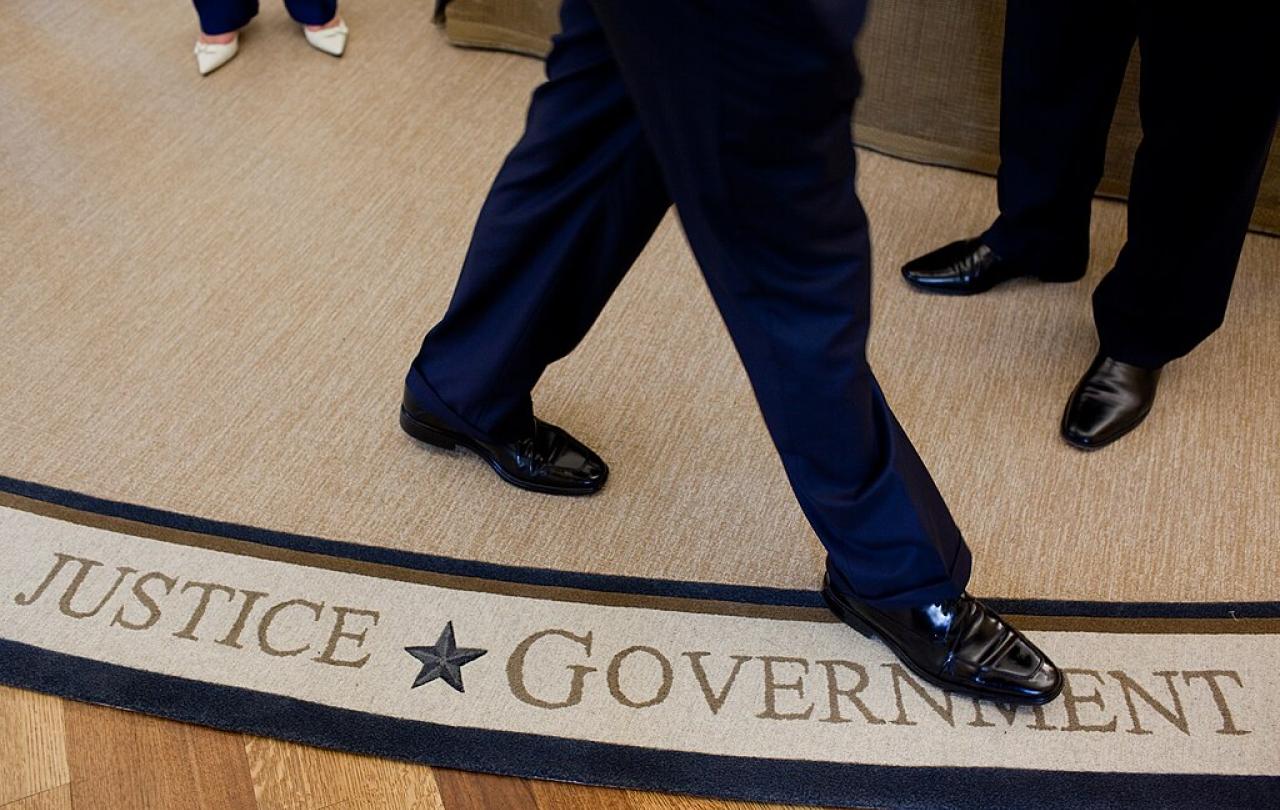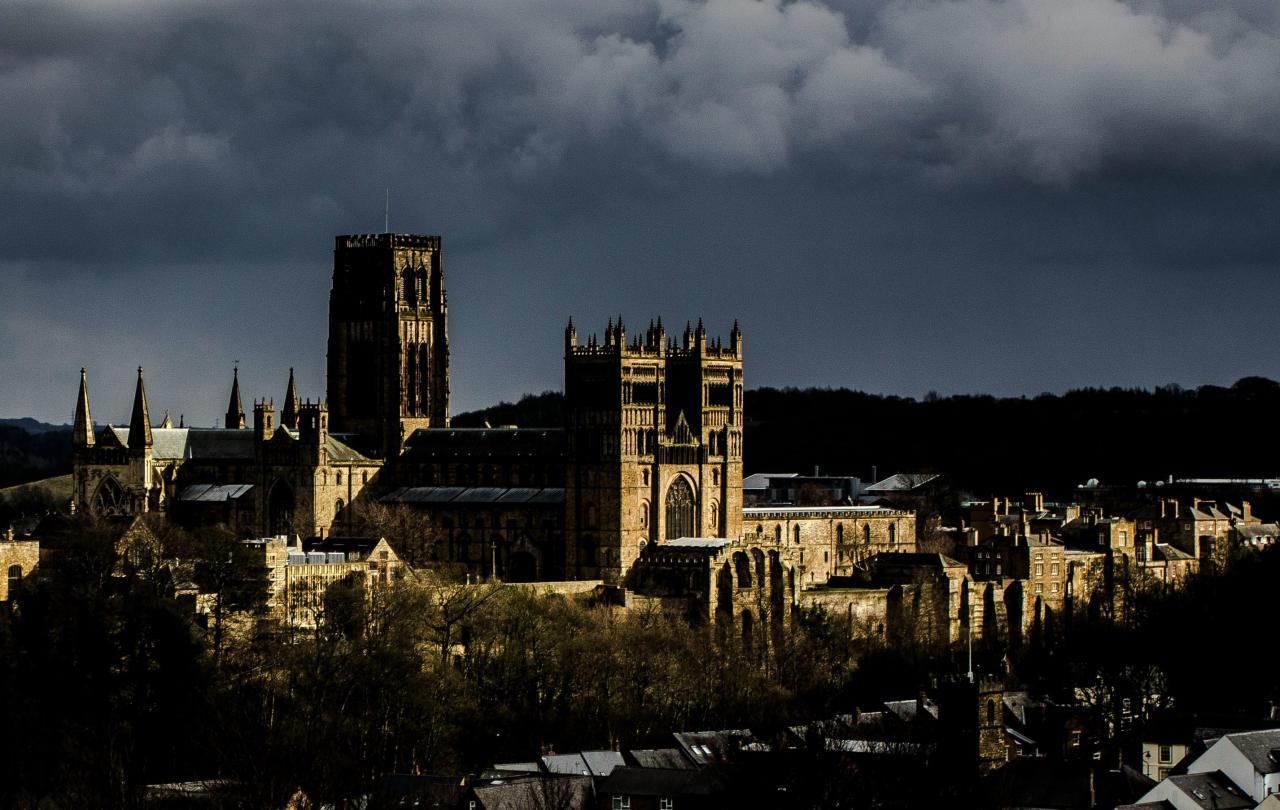
"Yes we can!
Yes we can!
Yes we can!"
There was something magical about hearing Barak Obama speak to a crowd. The rhythm of his sentences, the rhyme of his words and the melodic cadence of his baritone delivery had the ability to hold you spellbound. It felt so positive, so uplifting, so inspiring.
The call and response with the audience only underlined the positivity of the impression: ‘Yes we can!’
It was listening to Obama that I first heard the quote:
‘The arc of history is long, but it bends towards justice.’
I loved it. Obama used it a lot, and so did I.
It seemed to epitomise the hopefulness his presidency embodied. Implicitly, it advocated the qualities of patience and persistence that are so important in working for a better world. It doesn’t happen overnight. It also acknowledged his rootedness in what had gone before, ‘As Dr King used to remind us …’. Obama was borrowing the line from one of his own heroes.
In fact, the quote was with him all the time in the Oval Office of the White House, to the right of his desk. Along with four other quotes it was woven into the perimeter of a 23 by 30-foot oval rug that almost filled the room.
The one-liner still delivers a punch, just as it did for Martin Luther King. However, I am increasingly convinced that it doesn’t stand scrutiny. As much as I want it to be true, and long for it to be true, I do not believe that it is.
The sentiment was of its time. Not the 1950s and 60s of Dr King, but the 1850s of the Unitarian minister Theodore Parker from Massachusetts. The germ of an idea originated with him in a sermon entitled, ‘Of Justice and the Conscience’. At this point it was a complicated paragraph rather than a pithy one-liner.
‘You see a continual and progressive triumph of the right. I do not pretend to understand the moral universe, the arc is a long one, my eye reaches but little ways. I cannot calculate the curve and complete the figure by the experience of sight; I can divine it by conscience. But from what I see I am sure it bends towards justice.’
Parker was also responsible for ‘government of the people, by the people, for the people’ that Abraham Lincoln would go on to cut and paste into his famous Gettysburg Address during the Civil War. It also appeared on Obama’s rug.
The intellectual circles of the 1850s were alive with many new ideas like progress, equality and the abolition of slavery, and ‘transmutation’ (or evolution as it would become known). In science, industry and social life things were moving forward and getting ever better.
As the century moved on this conviction continued to grow and become more widespread. By the early years of the twentieth century Parker’s thought itself had been distilled down into the single line we’re familiar with and included in popularly published collections of aphorisms.
Prosperity and progress informed the narrative of Western culture and ideas of evolution were imported into other disciplines. In anthropology, for example, this gave rise to ‘social evolutionism’ and the categorisation of societies into a developmental sequence ranging from ‘primitive’ to ‘civilised’.
Of course, it doesn’t take much imagination to recognise that there was a darker side to such notions. Here was also an underpinning for a colonial worldview and an intellectual justification for racial hierarchy. Western culture was more ‘evolved’.
These views were epitomised in psychology where, for example, in Freud’s Totem and Taboo (1913) he speaks of indigenous people as ‘the most backward and miserable of savages’, comparing the way they live with features of a neurosis and mental disorder.
The carnage of the First World War effectively popped the bubble of an overly optimistic ‘progressivism’. I do wonder whether we are now at another ‘bubble popping’ moment in the West.
Is your ‘bubble of optimism’ in danger of popping, or has it even popped already, like mine?
In the decades since the Second World War we have succumbed to our own narrative of progress. We have witnessed amazing technological advances and stunning scientific discoveries. The forward movement is obvious, and the promise of an even better future is clear.
Then, supported and monetised by the market economy, our lives are tempted, enhanced and festooned by the latest products and services that our money can buy. From smart doorbells to wearable tech and TikTok to ChatGPT our world is constantly changing and upgrading and the movement forward is undeniable.
The narrative runs in our wider life too. We celebrate the triumph of the suffragettes, the defeat of fascism and the collapse of old-school communism. Francis Fukuyama may have been premature declaring the end of the Cold War as the ‘end of history’ in 1989, but it did seem like Western-style liberal democracy was what the world was striving for.
Then there are the advances in our shared life together in Britain. If Acts of Parliament in some measure illustrate the pulse of the nation, the direction is clear. Take, for example:
- the Sexual Offences Act 1967
- the Sex Discrimination Act 1975
- the Race Relations Act 1976
- the Childrens’ Acts of 1986 and 2004
- the Disability Discrimination Act 1995
- the Human Rights Act 1998
- the statutory instruments protecting against discrimination in employment on grounds of religion or belief (2003), sexual orientation (2003) and age (2006)
- the Gender Recognition Act 2004
- the Equality Act 2010
- the Marriage (Same Sex Couples) Act 2013
This list isn’t exhaustive and there are campaigners who are very keen to add to it. But we live inside this narrative, and we know the plot. It is familiar to us. And it would be so easy to be seduced into a new myth of inevitable progress, ‘The arc of history is long, but it bends towards justice’.
‘Social evolutionism’ was so deeply embedded in late Victorian culture that its ‘self-evident’ truth went largely unchallenged. The vast majority believed their own hyperbole and complacently embraced the fruits of burgeoning industry and an expanding empire. They lacked the self-critical capacity to comprehend the flaws in their worldview and to understand what their world was capable of in the infernal, apocalyptic catastrophe that was unleashed in 1914.
Maybe, embracing a more contemporary myth of progress has a similar effect on us. We presume that our way of life will inevitably continue moving forward unchallenged. That we have a right to experience a tomorrow that will always be better than yesterday. And that those who do not subscribe to our notion of ‘progress’ are clearly inferior, ill-informed or backward in some way. But such a mindset also lacks a culturally self-aware and critical edge and is oblivious to how easily things could fall apart.
At this moment in time the world seems far less secure than at any point in my lifetime. Our community hosts refugees from Ukraine and Hong Kong, a friend has only recently returned from working with a voluntary agency in Israel and I am about to meet up with another friend who has just flown in from the United States.
Populist, anti-democratic and disruptive forces are more blatantly at work around the world than for many a long year. Developments in AI, cyber-terrorism and digital warfare create a disembodied sense of ‘existential threat’. And then there is the climate crisis. Fires in California, floods in Europe and the unprecedented sequence of six tropical cyclones in the Philippines in late 2024 seem to have had little impact in accelerating the response to global warming.
Is your ‘bubble of optimism’ in danger of popping, or has it even popped already, like mine?
Of late I have found helpful insight in observations made by Jesus. Rather than fixating about what might happen in the future, he encouraged those who had attached themselves to him to live in the moment,
'Therefore do not worry about tomorrow, for tomorrow will worry about itself. Each day has enough trouble of its own.'
For those who were concerned about what might be happening and felt the world was falling in around them, he offered reassurance. He counselled that such events did not signal the end of the world. Rather, this was simply the kind of thing that happened.
'You will hear of wars and rumours of wars, but see to it that you are not alarmed. Such things must happen … these are the beginning of birth pains.'
Rather, the early Christian ethic was rooted in God’s loving, supporting and strengthening presence during unstable times.
Writing to the Christian community that had formed itself in Rome, the apostle Paul was convinced that whatever befell them – trouble, hardship, persecution, famine, nakedness, danger, or weaponised violence – that nothing would be able to ‘separate us from the love of God that is in Christ Jesus our Lord.’
And right at the base of this ethic that Jesus advocated was an unswerving commitment to ‘love your neighbour as yourself’
Which takes us back to Obama’s rug and the West Wing office.
On the left-hand side of his desk was a quote from President Theodore Roosevelt:
'The welfare of each of us is dependent fundamentally upon the welfare of all of us.'
And that really is it. History may not bend towards justice, and hard-won progress we’ve achieved can likewise be lost, but our future will always hang on the ‘welfare of all of us.’
Well said Mr. President!
Join with us - Behind the Seen
Seen & Unseen is free for everyone and is made possible through the generosity of our amazing community of supporters.
If you’re enjoying Seen & Unseen, would you consider making a gift towards our work?
Alongside other benefits (book discounts etc.), you’ll receive an extra fortnightly email from me sharing what I’m reading and my reflections on the ideas that are shaping our times.
Graham Tomlin
Editor-in-Chief





